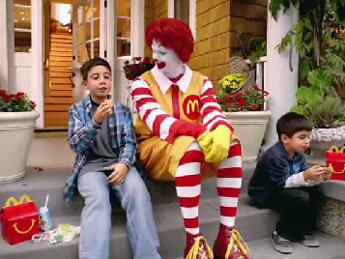
 Liz Seegert is a freelance health writer and adjunct instructor in Media and Communications for Empire State College.
Liz Seegert is a freelance health writer and adjunct instructor in Media and Communications for Empire State College.
A statement released last week by the American Academy of Family Practitioners confirmed what many in public health already know: childhood obesity is still on the rise, and TV advertising bears a large share of the responsibility. In addition to the sendentary nature of watching TV, the AAFP pointed specifically to marketers who advertise high sugar, high fat, high salt, high calorie meals and snacks that do nothing to foster good nutrition. It’s bad enough our kids are spending so much time in front of the TV screen, computer screen, and smartphone screen. The push by food manufacturers to encourage unhealthy snacking during these activities only serves two purposes. The first is to contribute to the corporate bottom line. The second is to fuel the time bomb of childhood obesity.
Study after study has confirmed this link. According to the National Center for Health Statistics, between 2007 and 2008, 17% of children and adolescents aged 2–19 years were obese. The Centers for Disease Control and Prevention reported that, since 1980, obesity prevalence among children and adolescents has nearly tripled. Health providers continue to document the growing prevalence of what were once only adult diseases like hypertension, and Type II diabetes. In addition to the physical toll, there is often a psychological and emotional toll upon obese children that leads to low self-esteem, poor school performance, and depression.
The advertising industry argues that it’s not the ads that are to blame. However, the number of TV ads a child in the US watched in the 1970s doubled to 40,000 by the 1990s. This doesn’t even factor in other media that play on children’s psyches. Kids ages 8-12 are most at risk for this overt influence – they watch more TV than their older counterparts, but do not yet have the cognitive ability to discern the underlying messages presented. More kids home alone after school, more disposable income by even young children, and pressure upon working parents to “give in” or grab some fast food to go after a long day at work, means kids are making more and more food choices on their own while being bombarded with hundreds of messages daily for chips, fries, soda, cookies, candy…
What to do? The Institute of Medicine has called for a ban on food advertising to children if voluntary restrictions by marketers are not effective. It’s clear from the evidence to date that industry self-policing has failed. Some experts believe a complete ban on such advertising would reduce incidence of childhood obesity by as much as 15 percent. Ironically, our Constitution may not permit a total ban in the US, as there is in the UK, where results of strict guidelines have been highly favorable.
While there is plenty of blame to go around for the increasing prevalence of childhood obesity, one thing is clear: the data shows the problem is getting worse, not better. TV ads contribute significantly to this plight. The Federal Trade Commission must step up, and enforce tighter regulations on advertising to children. It may be challenging to do so while balancing the First Amendment rights of food companies to promote their products – however unhealthy they may be – but the corporate bottom line must take a back seat when it comes to the health of our children.
Liz Seegert








